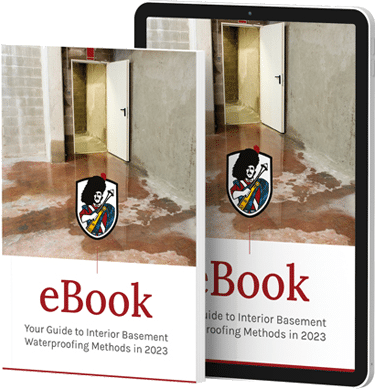Do you own a home in Toronto or the Greater Toronto Area? Are you looking to gain square footage by underpinning your home to make your basement usable? You are not alone! Many people choose to underpin their homes instead of adding an addition to the top level or adding another story. Why do people choose to underpin instead? Underpinning is far less expensive and it also requires less permits and work. That isn’t to say that underpinning your home is as simple as digging. This blog will show you what the building codes in Toronto require you to do before, during, and after you underpin your basement!
What is Underpinning?
Wondering what underpinning is? Underpinning is a method that is used to increase the depth of a foundation. This is completed by constructing new footings that are beneath the footings that already exist. Sometimes people also opt for underpinning if they want to reinforce the existing footings of their home or if they are looking to add another entrance to the home that is below grade.
What is the Angle of Repose?
If you have decided to underpin your home, you must determine what the angle of repose is. The angle of repose is the maximum angle that is measured from the horizontal where the soil remains stable. This angle is different for all homes because it varies based on the condition of the soil. The angle of repose is important when design drawings are prepared. This is because disturbing the soil in the angle of repose can lead to soil failure which can result in the need for serious repairs.
When is an Engineer Required?
If you are considering underpinning your Toronto home, you must get in contact with a professional engineer. Any time that construction is taking place below the level of the footing of an adjacent building or within the angle of repose, a professional engineer must be involved. They will be required to seal your designs and sign the Commitment to General Review form. The completed Commitment to General Reviews, including your completed Part A, must be submitted along with the permit application.
A foundation shall be designed and reviewed on-site by a Professional Engineer when it is constructed below the level of the footing of an adjacent building and within the angle of repose of the soil. Your designs must be sealed by a Professional Engineer, your Engineer must sign the Commitment to General Reviews form, and the completed Commitment to General Reviews (including Part A to be completed by the Owner) must be submitted with your permit application.
The reason that engineers must review the area and the drawing and sign all the paperwork is to ensure that the job is being and will be completed properly. This means that your home will be safe to live in and your neighbourhood will be safe as well!
General Information
There is also different information that you should know about underpinning your home.
- All of the drawings of your basement underpinning job must be completed on standardized sheets, they must be drawn to scale, they must also be fully dimensioned, signed, and dated.
- If the drawings were prepared by a qualified designer, the designers name, registration number, qualification identification number, signature, and stamp or statement, must be included. This will prove that the person has reviewed and taken responsibility for the designs that they have completed.
- All of the drawings, reports, and forms, must be provided to the city in a PDF on a DVD, USB drive, or via email.
If you have any questions about these facts, please contact us! Our team of experts have performed dozens of basement underpinning jobs so we know the ins and outs of the steps that are required to ensure the job is legal!
Required Documentation
There is also several different required documentation that must be completed and submitted to the city in order to complete your basement underpinning. These documents include:
Site Plan
- There must be a survey or site plan that shows the property lines, lot area, right-of-way or easements
- The location of existing/proposed buildings with overall dimensions must also be included. This plan should include setback dimensions to property lines and adjacent buildings
Basement/Foundation Plans for Underpinning
- You must provide existing/proposed construction with foundation and exterior wall information. This documentation must show locations of proposed underpinning as well as locations of any support columns and structural framing above
- You must also show the stages of proposed underpinning. These stages must be numbered to show sequence of work, and indicate the lineal meters of underpinning work proposed
- Where applicable, paperwork must be included that shows the distance to foundations of adjacent buildings. This must include depth of the footings of the adjacent building
Floor Plans
- Floor plans that are fully dimensioned, for each level showing existing and proposed uses of all spaces, including the location of smoke alarms and carbon monoxide detectors and all plumbing fixtures must be included
- You must also provide existing/proposed construction with foundation and exterior wall information, showing interior partitions and structural framing above
Sections
It is also important to include sections. These sections include:
- Cross section(s) that show existing/proposed building construction and specifications of all floor, wall, and roof assemblies
- Provide footing and foundation wall details that include the height of exterior grade above basement floor
- Show all heights including floor to floor and floor to ceiling
- Details about the stairs, landings, guards, and handrails
- Show the depth (amount) of underpinning proposed
This information is very important to the city so that they can ensure your underpinning job meets the requirements!
Construction Details and Notes
It is also important to include the construction details and the notes. These details and notes must include:
- A list of building materials and specifications of all wall, floor, and roof assemblies
- Guard details including connection detail
Required Forms
There are many forms that need to be filled out. These forms include:
Application to Construct or Demolish Form
This form includes a building permit application form which is required for all submissions. It can be accessed here.
Schedule 1: Designer Information Form
This form is required for all designers, except Engineers and Architects when applying for any Construction Permit. If a Property Owner is exempted from Qualification/Certification, they must fill-in the form to specify the reason for exemption. This form can be accessed here.
Commitment to General Reviews by Architect and Engineer
When the foundation of a home is being constructed below the level of the footings of an adjacent building or within the angle of repose, professional design and field review is required. This Commitment form must be signed by the owner or agent and the professional architect, engineer, or consultant. This form can be accessed here.
Tree Declaration Form
A tree declaration form is required for all projects where there is a potential for damage to private or City trees. The applicant is also responsible to comply with other tree protection bylaws. This form can be accessed here.
Application Process in Toronto
Looking to fill out an application? There is a process for you to follow! You can either apply by email or in person for your underpinning application.
Email Application
Email application saves you a trip! However it is important to note that not all projects are eligible for email submissions.
To submit an application by email please use the ‘Email’ button on top of the Application for a Permit to Construct or Demolish.
In Person Application
Want to submit your application in person? Visit our ‘No-Wrong-Counter’ Applications!
All customers also have the option to attend ANY Toronto Building Customer Service counter to make an application for any of the services listed above. Customers will be asked to present a rewritable DVD or USB drive containing all the necessary materials for the eligible service requests. No paper copies will be required.
Fees
If you are looking to have your basement underpinned in Toronto or the Greater Toronto Area we suggest that you contact the experts. As noted above, there are several standards that must be met before, during, and after basement underpinning. In order to ensure that you are abiding by the laws, it is much easier to have a set of professionals fill out all the paperwork. Our team at GJ MacRae has performed many basement underpinning jobs and we stay up to date with the latest requirements by the government. This allows you to rest easy knowing that the job is being completed properly and legally! If you want to receive a basement underpinning quote or learn more about what our team can do for you, visit our website or contact us today!







